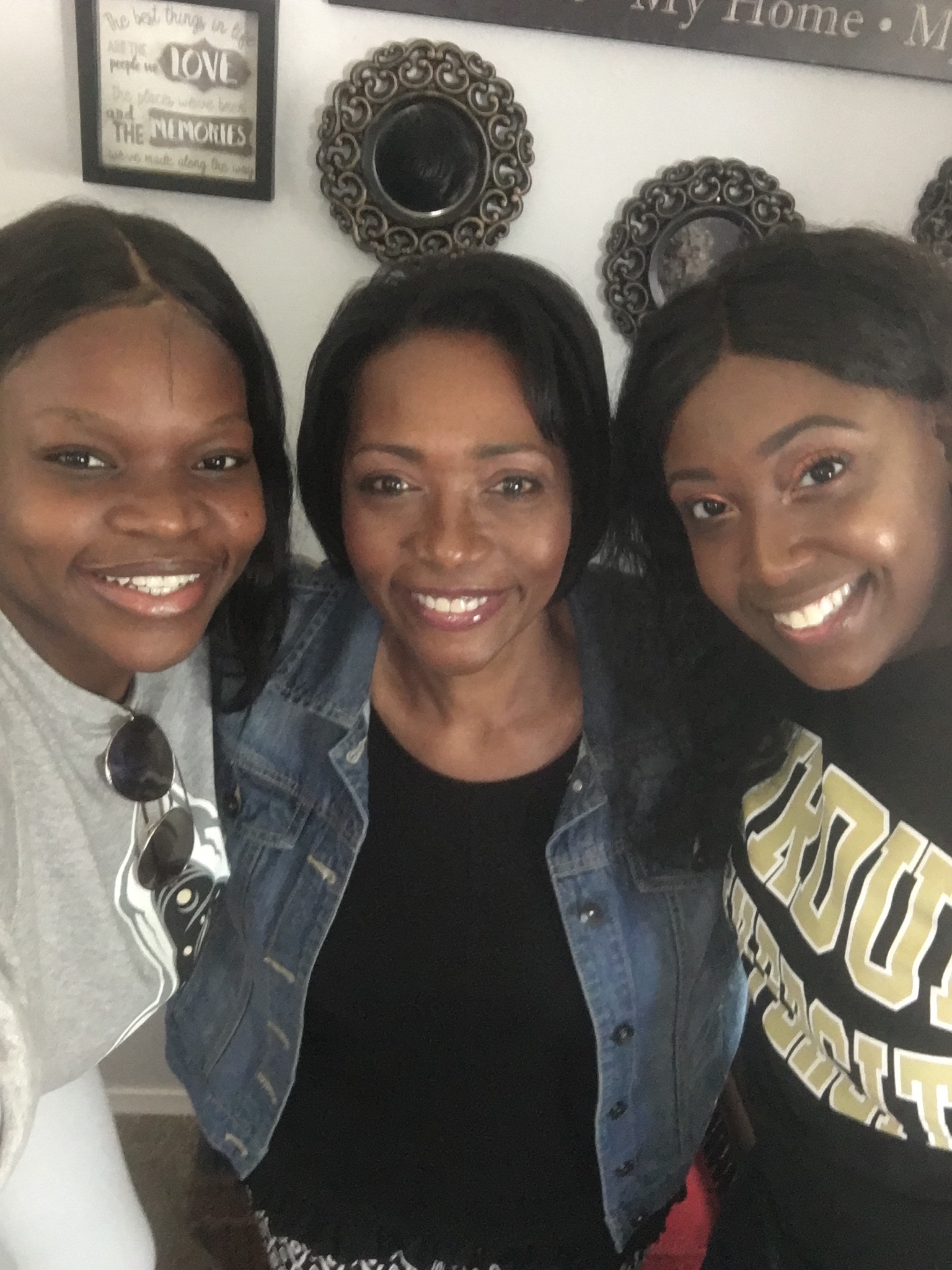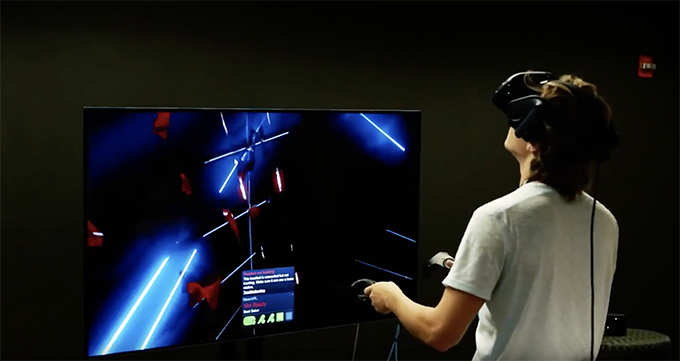
October 2018

Staff Profile
Kinzer a Mother Figure for Hawkins Residents
For Dinea Kinzer, a service worker in Hawkins Hall, taking care of students often starts with something as simple as a smile. The friendly welcome has led to numerous friendships during her 35 years at Purdue, during which she’s become a parent figure for generations of Boilermakers.
“They’re my kids,” Kinzer says. “I know I’ve got my job to do, but my job is also to be here for the students.”
Recently, Gina D. Smith, one of Kinzer’s close friends and a former resident assistant in Hawkins, came home for a visit during Homecoming weekend. When Smith discovered local hotel rooms were fully booked for the weekend, Kinzer opened the doors of her home to Smith and her friend, Nicole, to have a place to stay for the weekend.
The friendship between Smith and Kinzer dates to when the two met while Smith was living in Hawkins. Smith was a student Kinzer says she felt a bond with immediately, despite Smith not living on Kinzer’s assigned floor.
“Right off the bat, we connected,” says Kinzer. “I adopted her as my Purdue daughter and she adopted me as her Purdue mom. 'Momma Dinea' is what she calls me.”
Kinzer and Smith reunited in Hawkins Hall after Smith arrived on the Amtrak. Following the reunion, the two walked around campus, visiting a campus gift shop and getting coffee before heading out to dinner. The conversation between the two flowed late into the night at a local restaurant, where they had unknowingly stayed well past closing time.
“We wondered where people had gone and just kept talking,” says Kinzer. “It just didn’t stop. She was talking to me about everything in her life and how things were going. It was 11:00 and we didn’t realize the place had closed at 10.”
While Gina and Nicole attended the Homecoming game the following day, Kinzer bought a small gift for each of her guests. The two returned the favor with a card and gift as they left town following a home-cooked meal on Sunday.
Smith is one of many students Kinzer keeps in touch with from over the years. Kinzer remains in contact with former students through Christmas cards, gifts and text messages. Other former students will often stop by Hawkins Hall when they return to campus to say hello.
The friendships Kinzer builds with students are a product of the time and focus she invests in interacting with them every day. She has cooked a Thanksgiving dinner for international students, taught students how to iron clothing and, in working on a floor consisting entirely of men, provided advice on suits, ties, shoes and socks for job interviews. Simply engaging with students about their day, offering words of encouragement during difficult times, or even a friendly reminder to wear a jacket or bring an umbrella forms the basis of her daily relationships with students.
“You just have this bond,” says Kinzer. “You just offer a smile because you never know what they’re going through with the stress and pressure of studying. You just need to be there for them and keep an eye on them.”
Kinzer says that she now has a current resident assistant, who is from Malaysia, who has told her she is like his mother.
“I’ve got my Purdue son now,” she says with a smile.

Event Profile
Homecoming Tailgate Kicks off Giant Leaps Celebration
University Residences celebrated the kickoff of Purdue’s Sesquicentennial celebration with a tailgate at Homecoming 2018. The “Giant Leaps Kickoff” featured a gathering of University Residences alumni and friends. Keynote speaker John Sautter, former vice president of Housing and Food Services, delivered a keynote address highlighting University Residences’ Giant Leaps to those in attendance.
Campus housing has come a long way since Purdue Hall and Ladies Hall served as the initial on-campus homes of students when classes began in 1874. Electric lights were still five years away then; radio was 40 years away. Student slept on straw mattresses.
The first Giant Leap began with the completion of Cary East in 1928. Over the course of the next decade, Cary Northeast (1931), Duhme (1934), Shealy (1937) , Cary Northwest and West (1938), and Wood and Cary South (1939) followed. During that time, most students’ arrived by train carrying their possessions in a trunk. Classes would recuse for noon hour to allow students to return to their halls to eat.
The post-World War II era represented another Giant Leap with an explosion of veterans returning from war to pursue degrees. Purdue’s enrollment nearly tripled between 1945-48, with University Residences rising to the challenge with a combination of temporary housing solutions. The increase in enrollment was here to stay, necessitating the construction of Owen, Tarkington, Wiley and others in the 1950s and 60s. Some of the things that are now commonplace in campus housing began to take shape, such as common lounge areas, guest hours and the ability to eat in any dining court.
The most-recent Giant Leap occurred in the 1990s and early-2000s as student expectations continued to change with the explosion of personal technology and the food service industry. New standards are reflected in housing constructed during this era, including Hillenbrand, First Street Towers and Third Street Suites. The challenges led to the development of the Housing Master Plan and helped serve as the catalyst for the Dining Master Plan. The results can be seen in nationally-ranked dining courts, renovated student rooms, air conditioning, access to the latest formers of technology, security systems and other state-of-the-art offerings.
“Societal changes, behavioral norms, and economic and political perspectives changed, and the University and campus housing had to change with it to remain viable,” remarked Sautter. “And we did! We can proudly say then, as we do today, we were and are the largest housing system in the country that does not require students to live on campus. They are here because they want to be here.”
Now, University Residences is poised to take its next Giant Leaps with new construction and an expansion of its learning communities.

Campus Resource Profile
Virtual Reality Lab Debuts in McCutcheon Hall
University Residences has partnered with the Lamb School of Communication to open a new virtual reality lab housed in McCutcheon Hall. The lab features high-tech virtual reality consoles, multiple virtual reality headsets and handheld controls, a 70-inch curved television and game screen equipment.
The lab offers unique opportunities for Boilermakers to study virtual reality in their living environment as well as provide opportunities for Residential Life engagement. Access to the lab will help equip Purdue students with the tools to leverage virtual reality resources for the public good.
Watch the video below for a look inside the lab.
Writer: Matt Vader | Editors: Renee Kashawlic, Danielle Fawbush
Editorial Board: John Eckman, Renee Kashawlic | Inquiries Contact: studentlifemarketing@purdue.edu

